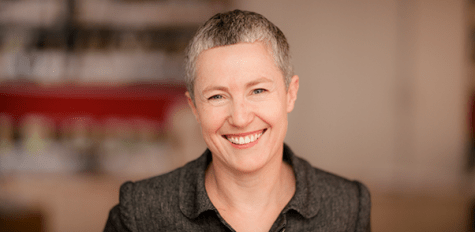Big Housing Build a step forward for homeless people, but not the whole solution
By Australian Property Journal
A proposed block of flats as part of the $5.3 billion Big Housing Build.
Victoria’s Big Housing Build won’t solve the state’s social housing issues, a leading social housing expert said.
The Victorian government’s proposed $5.3 billion project will see the construction of more than 12,000 new homes around metropolitan and regional Victoria, of which 9300 will be classified under social housing.
Premier Dan Andrews said the initiative would “change lives, giving thousands of Victorians the security and stability of a home”.
Haven, Home, Safe communications director Sue Masters said it was merely a start.
“It will only just bring Victoria back to the national average of around 4 per cent of all housing being social housing,” she said.
“While this massive investment is great, it’s really just make-up for the last decade that they haven’t invested in this sector.”
“Some other states, like NSW, have been quite entrepreneurial regarding their social housing approach, whereas others like Queensland and WA are quite behind the eight ball.
“Without a massive investment by governments in the supply of social housing, we will see an increase in homelessness nationwide.”

A shortage of social housing is not a new problem in Victoria. A study by the University of Melbourne in 2018 found that Victoria faced a shortage of more than 164,000 housing units available for low-income households.
North Melbourne St Vincent de Paul soup van coordinator Andrea Fitzgerald said Covid-19 highlighted this existing problem with social housing and amplified the need for such infrastructure.
“Sadly, I believe we’ve really dropped the ball on social housing across the board,” she said.
“For example, there was talk of the Wingate Community Centre being sold-off. This massive public housing block, with a strong community within it, all being sold off for private housing.”
“They say the government aims for 4-5 per cent of all housing to be public housing, which isn’t going to happen and never happens.”
St Vincent de Paul soup vans’ operations ramped up during the lockdowns, with the original weekly runs pushing out to six days a week.
“We noticed there was a huge need for more sustainable food. We couldn’t do one-offs handing out hot food, we couldn’t have people gather around the van,” Ms Fitzgerald said.
“Covid-19 has changed our operations drastically. We now go out almost every day.”
As for the Big Housing Build, Ms Fitzgerald said she hoped it happened. “More power to them if it goes ahead because it feels like sometimes, we get these announcements and they don’t actually come to fruition,” she said.

Research from real estate site Domain.com.au showed that while Melbourne’s rent prices fell significantly in the last year, median regional Victorian rent prices rose between 5.9 and 11.8 per cent.
According to a report from the ABS, more than 11,000 Australians migrated from cities to regional areas in the September quarter. Melbourne and Sydney suffered the greatest losses to interstate and regional migration, while 25-44-year-olds were the largest demographic of movers across all states and territories.
Ms Masters, who also serves as the director of the Community Foundation for Bendigo and Central Victoria, said regional towns needed more than Victoria’s Big Housing Build to keep up with mass migration from cities caused by the pandemic.
“We’ve seen demand for services, demand for housing, but we can’t really see that being reflected in job vacancies.”
While the Big Housing Build program will provide some jobs for builders, there’s a serious lack of other job support for the regions.
“The growth needs to be there and unfortunately Bendigo is a health and tertiary education kind of regional centre,” Ms Masters said.
“It’s been a bit tough in the tertiary sector, and there are job losses at the local uni, La Trobe in Bendigo.”

Other short-term government schemes like the federal government’s Homebuilder grants were meant to stimulate the economy following construction unemployment, but homelessness experts say the money would have been better spent stimulating social housing construction.
Council to Homeless Persons policy and communications manager Kate Colvin said the construction of social housing would afford regional residents more opportunities to pursue work.
“The delivery of homes to people who otherwise might not have a home, means families that were homeless have that safety and security, and that means they can stay in the labour market,” she said.
Ms Colvin said the federal government needed to do more after the axing of the National Rental Affordability Scheme.
“In the context of LGBTIQ homelessness, this is a real problem for a lot of young people who find themselves unable to stay at home because it’s not safe for them there, and then they get out at a young age into a rental market where they can’t afford to secure a home,” she said.
“There does need to be a subsidy to bridge the gap between the cost [of housing] and the revenue that’s generated when you rent a household on a low income on an affordable rate.
“There’s not currently a subsidy from the federal government and we would encourage them to increase the amount of supply of social and affordable housing by having a subsidy like that.”













